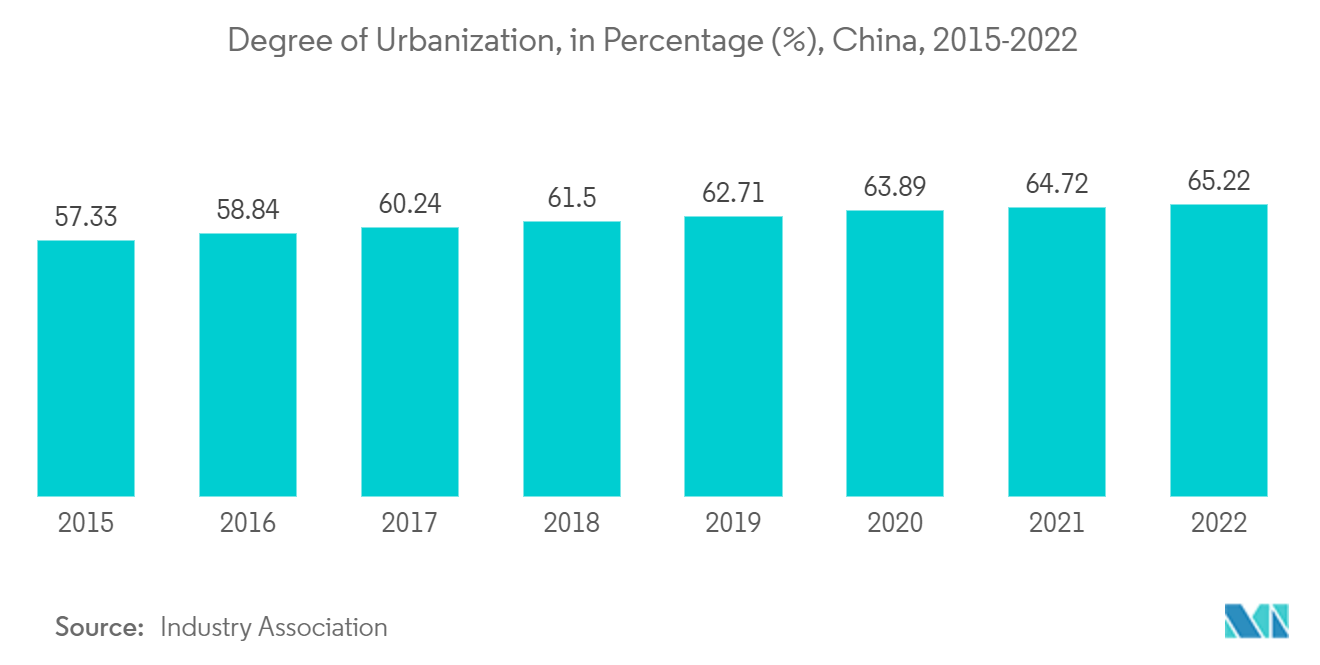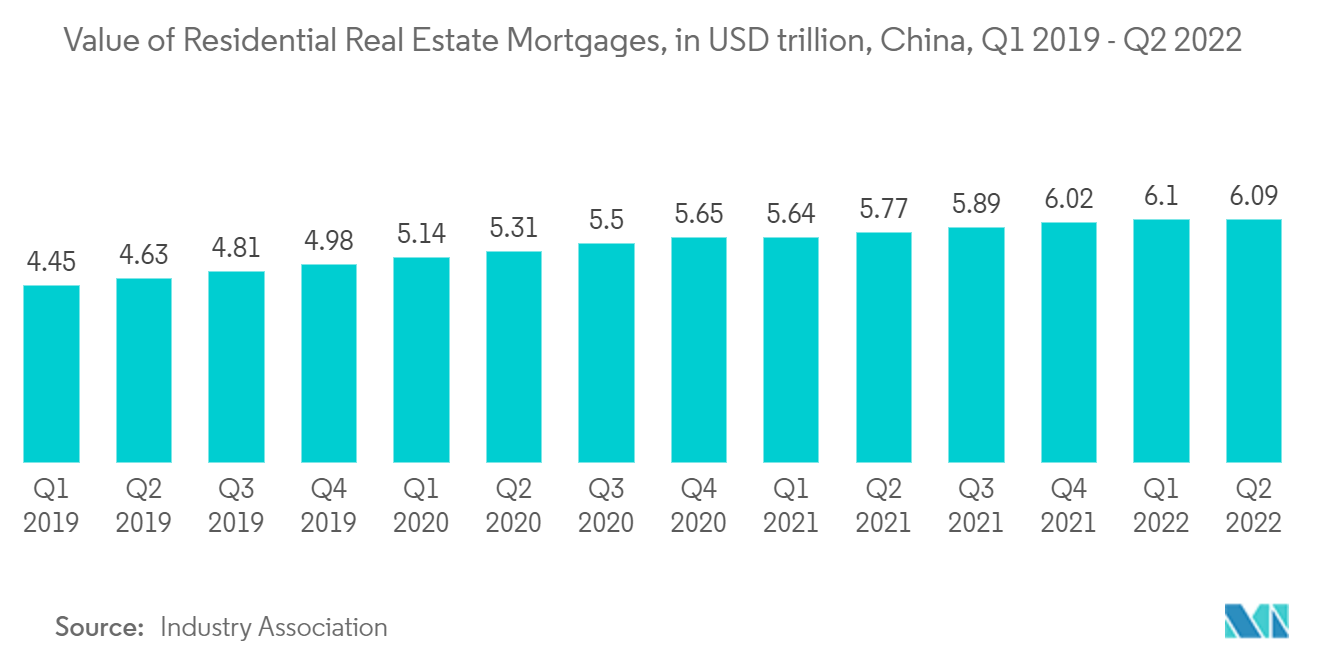Market Trends of China Residential Real Estate Industry
Urbanization Driving the Residential Real Estate Market
One of the factors driving demand for the residential real estate market is the rising pace of urbanization, noting that at the end of 2020, China's urbanization ratio was around 64%, and this ratio is to rise over the next five years to 70% or 75%. Between 2000 and 2020, an estimated 415 million new residents settled in China's cities, and an estimated 208 million will settle by 2040, according to estimates by the United Nations. China's urbanization rate of permanent residence hit 64.72% in 2021. In 2021, the country saw an accelerated trend of rural residents moving to cities, according to the National Development and Reform Commission. Due to this, the capacity of city clusters and circles has been enhanced, the quality of urban construction has been improved, and the integrated development of rural and urban areas has also made new strides.
With improving job market conditions and better income growth, consumers or households are looking for (an) upgrade or buying primary (residences) in urban areas. Beijing has carried out various measures to ease the pressure on young people to buy houses, such as offering government-subsidized homes. However, not all people can buy these houses, so they wait and save money to buy commercial houses. With growing urbanization, property prices in first-tier megacities and economically prosperous towns in many countries remain shockingly high, and newcomers cannot afford to buy a home. This leads to a popular belief that real estate is the best way to preserve and generate wealth, stimulating the demand for additional properties.

Lowering of Mortage Rates for Mitigating Property Crisis
Lending mortgage rates also influence the decision of house purchase in the residential real estate market. In February 2022, banks in nearly 90 Chinese cities slashed mortgage rates to boost sales and mood in a residential real estate market roiled by a liquidity crisis and struggling developers. Commercial lenders decreased mortgage rates after the central bank cut the benchmark LPR twice in December 2021 and January 2022, aimed at boosting the world's second-largest economy's flagging growth. China's home prices fell faster in December 2022, reflecting persistently weak demand amid rising COVID-19 cases despite a slew of support measures. China's property market crisis worsened in the summer of 2022, with official data showing home prices, sales and investment all, adding pressure on the faltering economy. The lowering of mortgage rates is an effort to mitigate this crisis.
For the first time since mid-2020, mortgage rates in Beijing and Shanghai have fallen month over month. China's four biggest banks lowered mortgage rates in the southern city of Guangzhou by 20 basis points in February 2022. Thirty basis points cut mortgage rates in smaller cities such as Hohhot, Zhongshan, and Huizhou. Since late 2021, authorities have taken several measures to avert a hard landing for the property sector, including steps to support buyers such as newly married couples. The Shanghai branch of the central bank has told commercial lenders in the financial hub to accelerate real estate-related loans. In August 2022, China's Central Bank, the People's Bank of China (PBOC), made its biggest recorded cut in the five-year Loan Prime Rate (LPR) to rein in the said crisis. The five-year LPR, cut by 1.5% to around 4.2%, would bring down the cost of housing mortgage repayments across China. In 2022, China's central bank slashed a key mortgage rate for the first time in almost two years, causing the shares of Chinese property developers to soar in Hong Kong. The stock prices of Hong Kong-listed Chinese property developers increased dramatically, recovering some of the recent losses.


